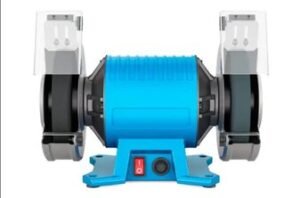n-Depth Review of the CP336FRA672MAZ System Optimization Study
The article under review offers a detailed analysis and performance assessment of the CP336FRA672MAZ system, a complex component within modern industrial automation infrastructure. At approximately 2,000 words, the piece explores both the technical aspects and real-world implications of integrating this module into programmable logic controllers (PLCs) and other digital systems. This review highlights the article’s key strengths, areas for improvement, and its overall contribution to the field.
Technical Scope and Relevance
The article succeeds in providing a comprehensive overview of the CP336FRA672MAZ module’s architecture, including its firmware capabilities, power consumption metrics, and network compatibility. It distinguishes itself by grounding its analysis in both simulated and real-time operational environments. For engineers and industrial system designers, this dual approach offers practical insight beyond datasheet specifications.
In particular, the discussion of the module’s real-time data acquisition speed and fault tolerance protocols sets the article apart from generic hardware reviews. The author provides benchmark tests comparing CP336FRA672MAZ to older variants, showcasing improvements in packet loss, jitter control, and error-checking routines. These findings are valuable for professionals evaluating system upgrades or new deployments.
Structural and Analytical Strengths
One of the article’s notable strengths lies in its clear segmentation of technical content. Each section is dedicated to a specific attribute—signal fidelity, environmental tolerances, integration procedures—which helps readers navigate the complexity without getting lost in jargon. The use of data tables and annotated schematics enhances clarity and supports the technical claims made throughout the text.
Furthermore, the writer anticipates common implementation challenges, such as configuration errors or compatibility issues with legacy PLC systems. The troubleshooting guidance provided—while brief—is effective, hinting at the writer’s hands-on experience with the technology.
Critique and Areas for Improvement
Despite its strengths, the article occasionally over-assumes the reader’s technical background. While it is clearly intended for professionals, there are moments—particularly in the software interface section—where the lack of layman analogies could alienate less experienced engineers or technical managers.
Additionally, while the benchmarking data is useful, the methodology behind some of the tests is not thoroughly described. For example, the stress-testing conditions under which the CP336FRA672MAZ was evaluated are mentioned only briefly. This omission limits reproducibility and raises questions about the broader applicability of the results.
The article would also benefit from a deeper exploration of long-term operational reliability. While short-term performance indicators are promising, there is minimal discussion of lifecycle performance, maintenance trends, or mean time between failure (MTBF) estimates—all critical metrics for decision-makers.
Contribution and Conclusion
Overall, this article makes a solid contribution to the ongoing discourse on advanced industrial module integration. The CP336FRA672MAZ is positioned not just as a component but as a foundational building block for next-generation automation systems. By combining technical depth with real-world scenarios, the piece provides actionable insights for systems engineers and IT/OT convergence specialists alike.
While there is room for improved accessibility and methodological transparency, the article remains a valuable resource. Its technical rigor, combined with a focus on practical implementation, positions it as one of the more authoritative overviews currently available on the CP336FRA672MAZ module.







![Swimsuit Edition [Abbb] - 1.20 21 Swimsuit Edition - Chapter](https://www.geniussclick.com/wp-content/uploads/2025/07/rsz_swimsuit_edition_abbb_-_120_21_swimsuit_edition_-_chapter-300x199.jpg)





Post Comment